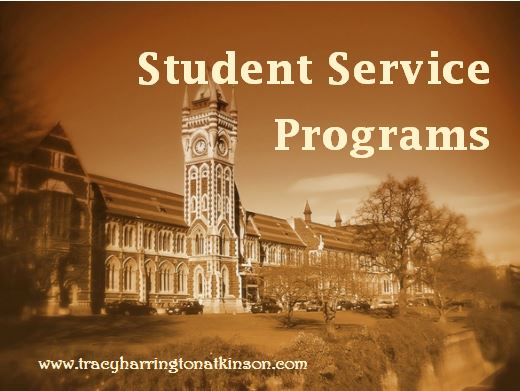The National Bureau of Economic Research (2010) proposes a direct correlation between increased graduation rates and institutional spending for student services. “An increase in spending on student services of $500 per student was correlated with an increase in graduation rates of 1.7 percent” (para. 1). Additionally, the increase spending for academic resources such as instructional activities and research are negatively associated with graduation rates. Those institutions who increase their budget line items in these areas note a smaller graduation rate. These educational facilities are reallocating their resources toward students services to increase their manifestation of success as evidenced by higher graduation rates. 
The definition of student success has been equated with graduation rates by state governments and the federal government. Yet, for the student, success is measured not necessarily by graduation but by their desired outcomes. Many students are returning to school to attain a degree while others are searching for expertise in a field, enhanced workforce skills, and simply to grow personally (Kramer, et. al., 2007). Regardless, these outcomes are each met through the effective implementation of student services.
Student services can be defined as any program within higher education which contribute to the emotional, educational or physical welfare of the student. These amenities reach beyond the formal instruction of students. They can help develop the intellectual and social development of students (Education.com, 2010). They help develop the characteristics of the whole student.
Within higher education, these services have been created to support students and staff. These services “include academic support services, academic advising, admissions, alcohol and drug education programs, career services, campus ministries, community service and service learning, counseling, financial aid, food services, fraternities and sororities, health centers, housing and residence life, multicultural programs, orientation, recreational sports, student activities, student discipline, and wellness programs” (Wilson, 2010, para. 6).
These services vary according to the size of the educational institution and the functions required by the student body. Many of these services are based on the philosophy of the college or university especially as higher education moves toward a more student centered approach. “The most common administrative philosophy is to enhance and support students’ experiences, from initial enrollment through graduation” (Wright, 2010, para.4). Although if the mission statement does not explicitly notate a student centered approach, the needs of student services do not need to be compromised.
The purpose of student services is to mold an individual into a whole being capable of lifelong learning who contributes to society and its members. Each service within higher education participates in this process through providing specific needs. For instance, most two year and four year institutions have a career development office which will help an individual into the workforce. This function is responsible for the job fairs, employment advertising, retraining and even for interviewing students (Wilson, 2010).
One of the first student services encountered by individuals is the recruitment and admissions offices. These offices use counselors to aid them in speaking with high schools in order to recruit future students. These departments are the first contact for students with the institution and can make a strong impression on the student for the duration of their academic career.
A valuable asset to many students is the psychological and developmental counseling. This service can helps students who are “adjusting to college life, whether at a four-year or two-year institution. This adjustment can be difficult. Unlike high school, there is usually much less oversight of absenteeism, and large students bodies make it difficult to assess changes in student behavior that may need intervention” (Wright, 2010, para. 11). Campus counseling should be integral piece of any student services program.
As educational institutions compete for students, they are noting the need to reallocate resources within higher education from research and instructional needs toward student services. This requires that higher education adapt swiftly to the changes demanded by current and future students. It also demands that student support services morph as the demographics and characteristics of the common student change. Such changes already envisioned are the need for added technical support. Students are demanding more access to libraries, educators, advisors and social networks within their colleges and universities. “In addition, a diverse student body requires student services personnel to be equipped with new skills, including second-language proficiency and sensitivity to disabled, culturally different, and gay and lesbian students. Also, an increase in nontraditional adult students necessitates new approaches to student services, including services at alternative times to meet the needs of part-time and working adults” (Wilson, 2010, para. 8).
The change in higher education from teaching information to teaching students has drastically altered the look of student services within higher education. Colleges and universities are focusing on the individual and their personal as well as professional development. This focus on the student has created the need for each institution to carefully evaluate the reallocation of the resources to create successful students.
Sources:
Education.com. (2010). Student services. Retrieved December 20, 2010 from www.education.com/definition/student-services/
Kramer, G. et. al. (2007). Fostering student success in the campus community. San Francisco: Jossey-Bass.
National Bureau of Economic Research. (2010). Non-Instructional Expenditures Affect Graduation Rates. Retrieved December 20, 2010 from www.nber.org/digest/jan10/w15216.html
Wilson, M. (2010). Student services: college and universities. Retrieved December 20, 2010 from www.education.com/reference/article/student-services-colleges-and-universities/?page=2
Wright, U. (2010). Student services: community colleges. Retrieved December 20, 2010 from www.education.com/reference/article/student-services-community-colleges/
By Tracy Atkinson
Tracy Atkinson, mother of six, lives in the Midwest with her husband. She is a teacher, having taught elementary school to higher education, holding degrees in elementary education and a master’s in higher education. Her passion is researching, studying and investigating the attributes related to self-directed learners. She has published several titles, including The Art of Learning Journals, Calais: The Annals of the Hidden, Lemosa: The Annals of the Hidden, Book Two, Rachel’s 8 and Securing Your Tent. She is currently working on a non-fiction text exploring the attributes of self-directed learners: The Five Characteristics of Self-directed Learners.

Comments are closed